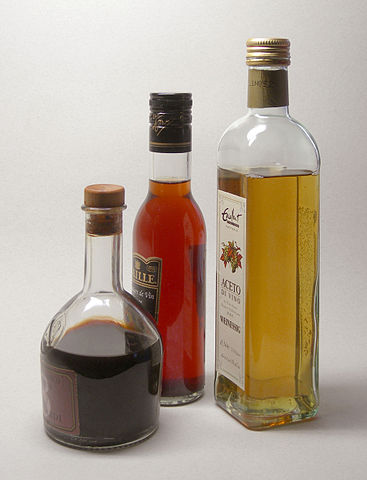Balsamic Vinegar vs Red Wine Vinegar
The differences between balsamic vinegar and red wine vinegar include taste, color, and production process. Vinegar is an acidic liquid produced from alcoholic beverages and has been used for centuries. The word vinegar comes from the French vinaigre, meaning sour wine. Balsamic and red wine vinegar are two popular varieties of vinegar.
What is Balsamic Vinegar?
Balsamic vinegar is a classic Italian vinegar that is formed traditionally. The traditional vinegar fermentation process occurs when wine is placed in wooden casks with holes to allow for aeration, converting the alcohol into acetic acid. Great care is needed to create full-bodied balsamic vinegar from grapes, as they are crushed and aged in specially made barrels that allow both oxidation and fermentation. Balsamic vinegar may take up to 12 years to age, becoming thick and dark in color. Low-quality balsamic vinegars are aged for just a few months, while medium grade vinegars are aged for 2 years. The true balsamic vinegar is aged for 12 years and can cost over $100 per bottle, and is used for deglazing pans, dressing vegetable dishes, and seasoning various foods.
What is Red Wine Vinegar?
Red wine vinegar is a common variety of vinegar in France and some other Mediterranean countries. It can be made from either red or white wine, with red wine being used for red wine vinegar. It takes just a year or two to ferment, having a brownish color and a mellow flavor. It is used for salad dressings and sauces. Cheaper varieties of red wine vinegar have an aggressive flavor and are typically less aged.
Key Takeaways
- Balsamic vinegar is made from grapes and aged for up to 12 years, while red wine vinegar is made from red wine and aged for 1 to 2 years.
- Balsamic vinegar is more expensive than red wine vinegar and has a sweet, fruity flavor, while red wine vinegar has a mellow flavor.
- Red wine vinegar is often used for salad dressings and sauces, while balsamic vinegar is used for deglazing pans, dressing vegetable dishes, and seasoning various foods.
